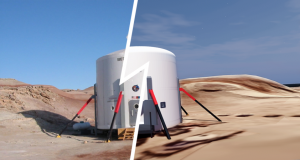Lawmakers Question Texan Power Grid Manager’s Subsidies for Crypto Miners

Politicians and environmental activists seem to absolutely loathe Bitcoin, often citing the energy that gets used for bitcoin mining. Now some U.S. Senators are bothering a Texan power company for … paying crypto miners to not use so much power?
Senators Edward J. Markey (D-Mass.), Elizabeth Warren (D-Mass.), Sheldon Whitehouse (D-R.I.), Dick Durbin (D-Ill.) Representatives Al Green (D-Texas), Katie Porter (D-Calif.), Jared Huffman (D-Calif.), and Rashida Tlaib (D-Mich.) signed a letter to the Electric Reliability Council of Texas (ERCOT), which manages Texas’ power grid. The letter questions the energy usage of digital asset miners based in Texas, their impact on climate change, and financial incentives sent out to crypto mining operations that don’t run their rigs during peak hours.
A statement from Markey states that Texas hosts 25% of the nation’s crypto mining power. He claims that crypto miners use enough energy to power Houston residences twice over. Markey also claims that Riot Blockchain, a major crypto mining firm, received $9.5 million in subsidies to avoid running its mining rigs during peak hours.
The letter signed by these senators claim that “Cryptomining is adding significant demand to an already unreliable grid.” However, the subsidies are apparently meant to have the opposite effect – effectively paying the biggest consumers of Texan electricity to scale things back during peak hours. The politicians demanded that ERCOT end any agreements they have with crypto mining firms by the end of October.
Texan Power Grid Apparently Struggles During Extreme Cold
Texas’ power grid runs on different standards than the rest of the United States, possibly due to its past rejection of national standards. Some experts like Hunt Energy Network CEO Pat Wood stated that it could hook its energy grid up to the national network without too much of a hassle. However, Texas apparently fears that it will lose autonomy in managing its power grid if it does that.
Unfortunately, mismanagement of the power grid caught up to Texas in February 2021, when a severe cold snap knocked out power for 4.5 million homes and businesses. Politicians blamed renewable energy, insufficient natural gas, insufficient regulation, failure to “winterize” the power grid, and failure to connect neighboring grids. (At the time, nobody blamed it on crypto miners.)
However, politicians seem to have short memories. The signers of the letter to ERCOT have apparently forgotten why ERCOT would incentivize major users of energy like industrial crypto miners to scale back their operations during peak hours. Perhaps the 246 deaths caused by the February 2021 power outages are less important to them than scoring political points by bothering ERCOT over crypto miners getting payments to turn off their rigs during peak periods.
A Few Statistics on Crypto Mining
Time to throw in a few statistics since politicians in general tend to be long on rhetoric but short on statistics to back themselves up, right?
In May 2021, Galaxy Digital reported that Bitcoin’s energy usage was 113.89 TWh per year as of 2020. World energy production totaled 26,730 TWh in the same year, 234.7 times the amount that bitcoin mining used. While transmitting electricity, some of the energy tends to bleed off, to the tune of 2,205 TWh in 2020, 19.4 times what Bitcoin consumes. “Always on” household appliances like refrigerators used 1,375 TWh, 12.1 times Bitcoin’s consumption. Even the “mainstream” financial system used 2.1 times what Bitcoin did – but, sure, an alternative payment system that can include the millions of people who don’t have easy access to mainstream financial services is the problem.
More recently, the Bitcoin Mining Council reported that 59.5% of the electricity used for bitcoin mining in Q2 2022 came from sustainable sources. That represents a 6% increase over the same period in 2021. Bitcoin miners will typically seek out cheap energy and that often means finding sources like hydropower.
The Bitcoin Mining Council also observed that Bitcoin miners will upgrade their equipment to more efficient technology when they can. Microstrategy CEO Michael Saylor said:
“In the second quarter of 2022, the hashrate and related security of the Bitcoin Network improved by 137% year-on-year while energy usage only increased 63%. We observed a 46% year-on-year increase in efficiency due to advances in semiconductor technology, the rapid expansion of North American mining, the China Exodus, and the worldwide adoption of sustainable energy and modern bitcoin mining techniques.”
Miners, along with some exchanges and big names in the crypto industry, fled China during repeated crackdowns on digital asset-related industry. Other large Chinese-based online firms rebranded or jettisoned digital assets like NFTs, likely due to unofficial pressure from the Chinese government even though it denies banning NFTs. While leaving China, the owners of mining rigs could have settled down in places with strong support for renewable energy development.
Which means politicians are just blowing smoke about digital assets’ energy usage, aren’t being kept in the loop, or both. It may also be reasonable to take a closer look at their campaign donations. The Congress-critters who are the most loudmouthed in their (often unwarranted) criticism of digital assets are the most likely to take donations from banks, which have traditionally regarded Bitcoin as the competition.
It is true that Congress holds frequent panel hearings on Bitcoin and digital assets. However, the messages from digital asset supporters who appear on these panels don’t necessarily sink through. Many members of Congress only use panel hearings like this as a chance to make speeches and not as an opportunity to learn.
Other D.C. insiders like Carole Housem, Director of Cybersecurity & Secure Digital Innovation at the White House, seem to sort of get it. Here, she discusses her views on responsible development of digital assets. But then, she is not a politician.








